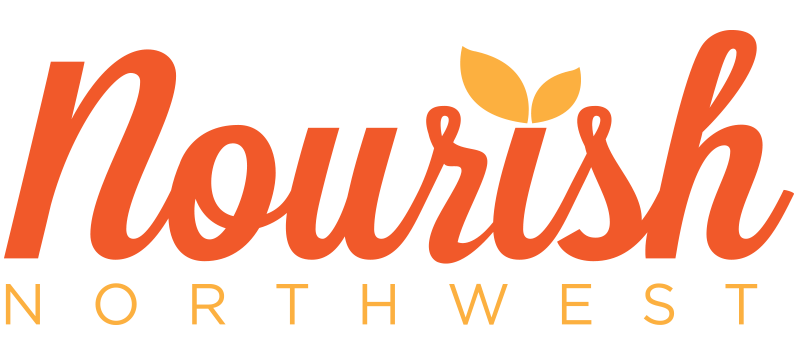The Pressure’s On
Post by Paula Jahn, Co-owner and Dietitian at Nourish Northwest
Do pressure cookers intimidate and mystify you and make you fear for your life? Did you miss our Pressure Cooker Basics class yesterday but still have questions about how to work the gadget? Read on to find out about the basic principles of pressure cookery. Also, keep an eye out for more nutrition workshops and cooking classes offered at Nourish Northwest!
HOW IT WORKS
When pressure is increased, so is the temperature at which water boils. At sea level, atmospheric pressure is 14.7 pounds/square inch and the boiling point of water is 212 degress Fahrenheit. As soon as the lid is locked on the pressure cooker, liquids produce steam and cause the pressure to increase to about 15 psi; the boiling point of water increases to >250 degrees F, thus cooking foods faster.
WHY I LOVE IT
- Foods cooked under high pressure cook in one-third the usual time.
- Steam pressure tenderizes the toughest cuts of meat, the hardest dried beans and the heartiest grains in minutes!
- Flavors mingle, intensify and taste “slow-cooked”.
- Fewer nutrients are lost.
PRESSURE COOKER LANGUAGE
LOCK THE LID: Follow manufacturer’s instructions. If the lid is not locked, the pressure will not rise.

BRING TO HIGH PRESSURE OVER HIGH HEAT: Apply maximum heat to reach high pressure as quickly as possible. This will take anywhere from 30 seconds to 20 minutes, depending on the contents of the cooker.
ADJUST HEAT TO MAINTAIN PRESSURE: Once high pressure is reached, reduce heat to medium-low to maintain it. If the pressure cooker is hissing and sputtering, the heat is too high. If the pressure indicator starts to drop, the heat is too low. You will get a feel for the level of heat necessary to maintain high pressure. For electric stoves, you may need to move the cooker to another burner since coils are slower to respond than a gas flame.

UNDER HIGH PRESSURE: Each cooker will explain how to recognize when maximum pressure is achieved. Usually, cooking times begin the moment high pressure is reached.
QUICK-RELEASE METHOD: Some foods, such as chicken and vegetables, require this method because they can easily become overcooked. There are two ways to reduce pressure quickly: run cold water directly over cooker or use the quick release function, if available.

LET PRESSURE DROP NATURALLY: The texture of legumes, whole grains and beef all benefit from a natural pressure release. Simply removing the cooker from the heat and letting the pressure come down naturally achieves this. This may take up to 20 minutes if you have a large pot of beans or grains in the cooker.
I use the pressure cooker mainly to cook dried beans in less than half the time (and with optional soaking!). My other favorites are beef stew and chicken curry.
Pinto Beans in Aromatic Broth
1 lb. (about 2 ½ cups) pinto beans, picked over and rinsed
9 c. water ¾ tsp salt (add at beginning – enhances flavor and helps beans keep their shape)
1 Tbs oil (needed to control foaming)
2-4 unpeeled cloves garlic
1 tsp ground cumin
½ onion, chopped
In a 6-qt or larger cooker, combine the beans, water, salt and oil. Add the garlic, and cumin.
Lock lid in place. Over high heat bring to high pressure. Reduce heat just enough to maintain high pressure and cook for 22 minutes. Turn off heat. Allow pressure to come down naturally, 15 to 20 minutes. Remove the lid, tilting it away from you to allow steam to escape.
Test the beans for doneness. They should mash easily and have a creamy texture. If just short of tender, replace (but do not lock) the lid and simmer until done. If still hard, return to high pressure for another minute to 5 minutes and allow the pressure to come down naturally.
If time permits, allow the beans to cool in the cooking liquid, uncovered. During this time, beans will firm up and any slightly underdone beans will complete cooking. Drain in batches in a large colander. Discard garlic cloves. Reserve the broth for making soup or stew. Refrigerate beans for up to 5 days or freeze for up to 4 months. 1 ½ cups cooked beans will equal a 15-oz can in recipes.
Resources:
Cooking Under Pressure by Lorna Sass
Pressure Perfect by Lorna Sass
The Pressure Cooker Cookbook by Tori Ritchie


